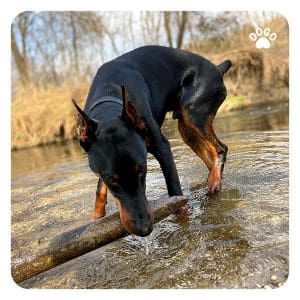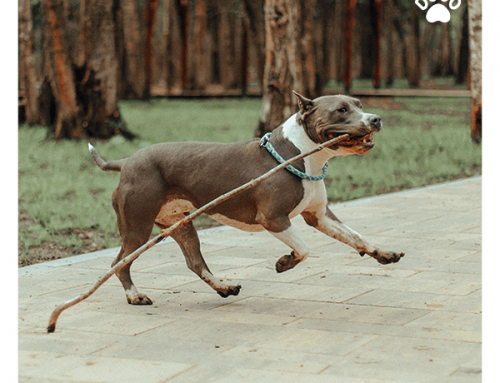
You can also read this article in Dogo App.
Many pet parents believe that they don’t have to take the dog for a walk if they have a garden. Nothing more misleading. While being in the garden every day, the dog gets to know its nooks, and after some time, this territory becomes boring. If the dog runs every day in circles around the fence, they won’t pick up any new smells or stimuli. They may start looking for other activities out of boredom, such as digging holes, barking at people or animals near the fence, or even looking for ways to escape. Many behavioral problems are caused precisely by insufficient quantity and quality of walks.
Training on a Walk
A walk is an ideal opportunity for training your dog with distractions. Doing outdoor activities together with a dog builds a good relationship between the owner and the pet.
Every dog parent dreams of a dog walking nicely on a loose leash. The way that a walk is not a daily struggle with your pet. However, not every dog understands why they should stay close when there are so many cool things around. Therefore, you should teach your dog to walk on a loose leash or by your leg. The ability to walk by your leg is crucial for safety reasons. You cannot allow a dog to run freely in some situations and places, such as a busy street on a narrow sidewalk.
However, it is essential to remember that walking by the leg is a job for the dog, not a walk. Therefore, you cannot expect your furry friend to walk close to you all the time. Use it only during training or in certain situations.
Loose Leash

You can find detailed instructions on how to teach your dog to walk politely on a leash in the Dogo app. We will show you how to start learning and how to improve these skills step by step.
Exploring
Every dog parent should remember that a walk is FOR the dog. It is their time to get their needs met and have fun. Therefore, do not make your pet work on the entire walk. While walking, keep your dog busy by letting them do what they like best: sniffing, digging holes, or running. If you can’t or don’t want to let your dog loose, you can give them more freedom with a lead of, let’s say, 20 meters. Once your dog has satisfied their natural needs outside, they will be much calmer and more polite at home.
Teaching your dog to walk on a loose leash can be challenging, but it is well worth the effort. It is essential to remember that every dog is different, and training methods that work for one dog may not work for another. When teaching your dog to walk on a loose leash, it is vital to be patient and consistent with your training. Start by rewarding your dog for walking close to you and gradually increase the distance between you and your pet. When your dog pulls on the leash, stop walking and wait for them to come back to your side before continuing. It is also a good idea to use positive reinforcement, such as treats and praise, to encourage good behavior. With time and practice, your dog will learn to walk on a loose leash and enjoy their walks with you.

However, when you are exploring new places, always keep your dog’s safety in mind. It is essential to be aware of your surroundings and any potential risks to your dog’s safety. Keep an eye out for other dogs, wild animals, and potential hazards like broken glass, sharp rocks, or poisonous plants. If you are hiking in the mountains or forests, make sure to bring enough water for both you and your dog. Additionally, consider bringing a first aid kit in case of an injury. Remember, prevention is always better than cure.
Suppose you limit your dog and make them follow “human rules,” such as walking only on the sidewalk. In that case, they may start to get frustrated and try to express their emotions by, for example, destroying things in the house.
The Golden Mean
In conclusion, a good walk should provide your pet with the opportunity to satisfy their physiological and mental needs. When going out for a long walk, first let them meet the most important, physiological ones. When the dog is calmer, we can spend a few minutes training, playing with them, and other joint activities. For the rest of the walk, let your pup explore the area, let them get scents, and discover new stimuli. Let them simply do what they like the most. Thanks to that, the walk will become something exciting and fun for them.
Apart from the time spent on training, ask your dog to walk close to you only in certain places and when it is necessary. In other situations, let the dog have their own space. Of course, this does not mean that they have to pull on the leash. That is why it is so important to learn the skill of walking on a loose leash. If you practice it, your pup will enjoy the space and freedom, but they will also obey the rules you taught them. If you follow our advice, you and your dog will find walks more enjoyable for both of you.
Create a Personalized Training Plan for your Dog






